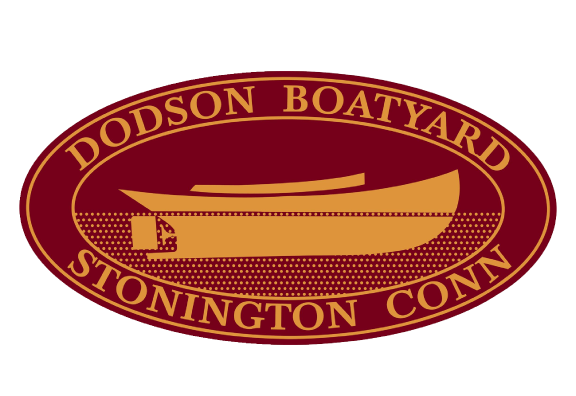We thought it might be of interest to describe some of the ways that Dodson’s has evolved over the years, in particular, regarding our on-going efforts to more efficiently deliver the services of a first class boat yard. Many of us here have been in this business for a long time and well remember the days without poppets (boat stands) and the only alternative to supporting boats was either cumbersome steel cradles and lots of heavy blocking or both. Needless to say, the process was slow and labor intensive. An investment in thousands of various sized adjustable metal poppets, in the last four decades, helped immensely. And then there was the process of hauling, moving and relaunching the boats. When the Snyder family acquired Dodson Boatyard in 1980, railways, greased skids, steel cables and pulling trucks were relied upon to move boats out of the water and into sheds. Easy? No. Efficient? Not! Since then, various sized Travelifts have seen service, including our current 5 ton remote controlled crane. Viva la difference! Another significant improvement in our operational efficiency was the addition of our hydraulic crane used for stepping and un-stepping masts. The crane is located adjacent to the work basin, extends to 120 feet, and has a capacity of 10,000 pounds. It too, like our large Travelift, can be operated remotely. Please note that the remote capabilities of the crane as well as the 85 ton Travelift contributes not only to more efficient operations but more importantly to the safety of our staff and the products being handled. (Note: Dodson Boatyard has achieved the lowest possible Workman’s Compensation experience modification rate allowed by state law, a function of negligible work site accidents.) But wait. There’s more. Dodson Boatyard custom ordered a 35 ton hydraulic self-propelled boat trailer in 1989. It was the first of its’ kind. Since then the yard purchased another custom made 45 ton boat mover.
Efficiencies of course are realized in more subtle ways such as our practice of sanding boat bottoms prior to moving boats indoors for winter storage; or carefully labelling and organizing gear that is removed from boats (e.g. spreaders, poles, sails, personal items, etc.); or carefully reviewing each boat’s condition at lay-up in order to avoid Springtime “surprises”; or using a designated forklift and specially designed pallets for moving necessary blocking used for supporting a boat’s keel; and more… Indeed, elsewhere in this newsletter we describe our high speed service vessel ALERT, our expanded over-the-road trucking fleet, and our in-house sail care operation. Dodson is committed to continue to find ways to improve through significant, annual infrastructure investment and creative thinking, with the goal to provide highly competitive value and cost effective service. It is an on-going effort.
